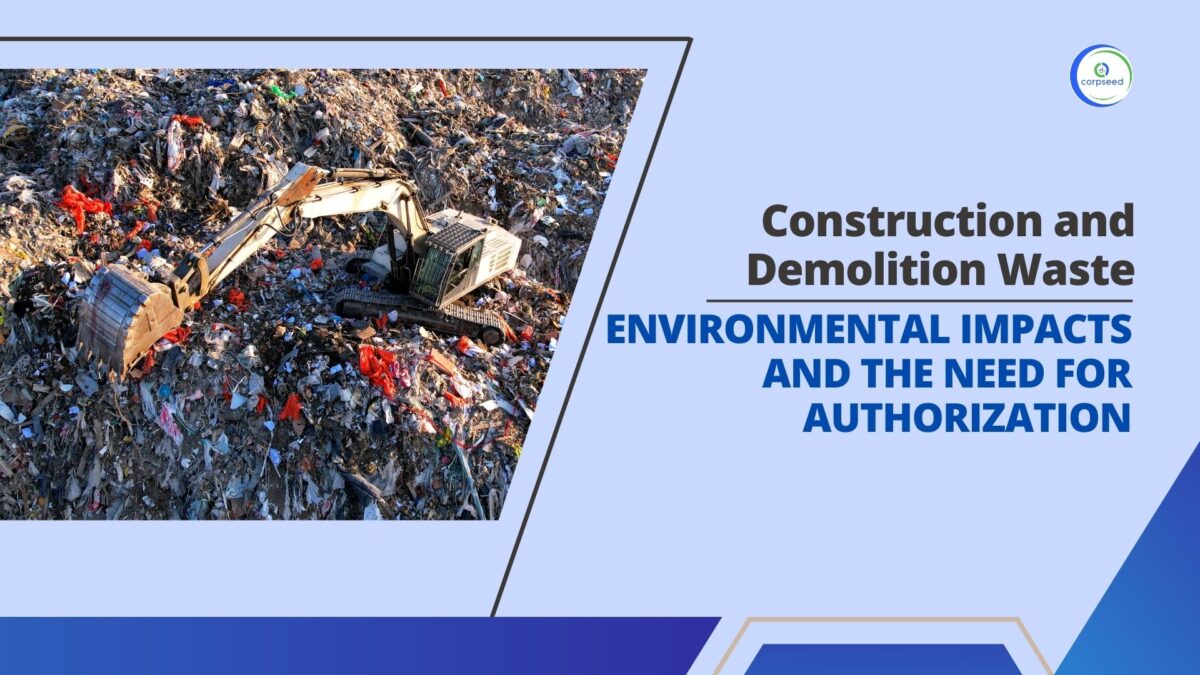Introduction: Construction and Demolition
Construction and demolition (C&D) activities have long been crucial for infrastructure development, urban renewal, and architectural advancement. However, the consequential environmental impact of such activities cannot be ignored. The generation of construction and demolition waste poses a significant threat to our environment, necessitating stringent regulations and authorization processes to mitigate its adverse effects.
Environmental Impact of C&D Waste
The scale of construction and demolition activities worldwide results in colossal waste production. This waste includes materials like concrete, wood, steel, plastics, bricks, and more, contributing significantly to landfills. The environmental repercussions of unchecked disposal are multifaceted:
- Landfill Overload: C&D waste constitutes a substantial portion of landfills, leading to limited space for municipal solid waste and hindering sustainable waste management practices.
- Resource Depletion: The extraction of raw materials for construction purposes exacerbates resource depletion, impacting natural habitats and ecosystems.
- Pollution: Improper disposal often leads to soil, water, and air pollution due to leachate from decomposing waste, release of hazardous substances, and dust emissions during demolition activities.
- Greenhouse Gas Emissions: The breakdown of organic materials in landfills produces methane, a potent greenhouse gas, contributing to climate change.
The Need for Construction and demolition Waste Authorization
Addressing the environmental impact of C&D waste demands a proactive approach. Regulatory authorization plays a pivotal role in managing and reducing the adverse effects:
- Waste Management Plans: Authorizations compel construction entities to develop comprehensive waste management plans. These plans delineate strategies for waste reduction, reuse, and recycling, minimizing landfill deposits.
- Implementation of Best Practices: Authorization mandates adherence to environmentally responsible practices, such as salvaging reusable materials, adopting eco-friendly construction methods, and segregating waste at the source.
- Monitoring and Compliance: Stringent authorization ensures oversight and enforcement of waste management protocols. Regular inspections and compliance checks guarantee adherence to prescribed standards, curbing unauthorized disposal practices.
- Encouraging Innovation: Authorization frameworks encourage innovation in waste management technologies, fostering the development of sustainable construction materials and methodologies.
Conclusion
The environmental impacts of unregulated construction and demolition waste are undeniable, and the need for authorization in waste management has never been more critical. By implementing robust regulatory frameworks, promoting recycling practices, and educating stakeholders, we can mitigate the adverse effects of C&D waste and work towards a more sustainable and environmentally conscious construction industry. It is time for governments, businesses, and individuals to collaborate and prioritize the responsible management of construction and demolition waste to safeguard our environment for future generations.


